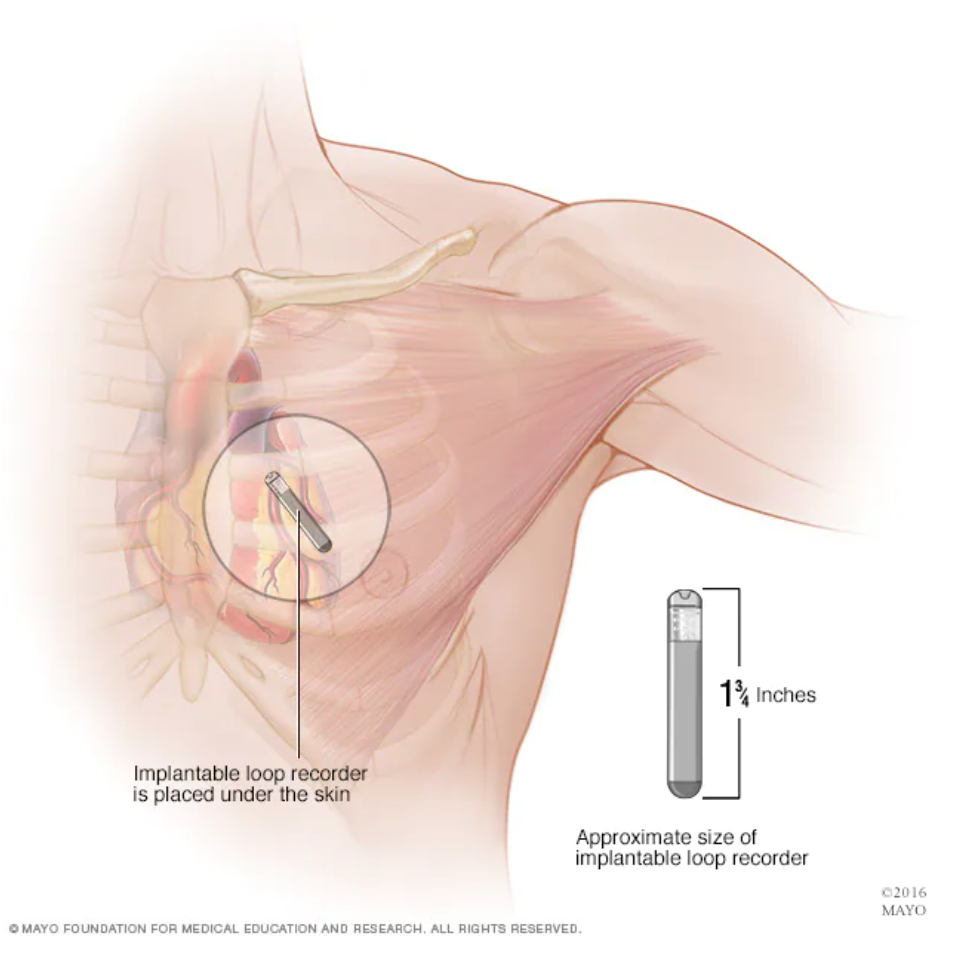Implantable Loop Recorder
An implantable loop recorder records the electrical activity of the heart. It is implanted underneath the skin of your chest. It can be used to find rhythm problems that occur only occasionally but may be serious. This device records the same kind of information as an EKG, a Holter monitor, and an event monitor, but it records over much longer time periods. A loop recorder's batteries often last one to three years.
Implantation is a minor procedure. You can usually go home the same day. Your doctor will give you instructions to prepare for the procedure. Usually these include no eating or drinking anything after midnight before the procedure. Unless your doctor tells you otherwise, take your regular medications before the procedure.
Before the implantation, you may be given a mild sedative, and a local anesthetic will be applied to your skin. A small incision, usually in the upper left chest, will be made. Your doctor will make a small pocket under the skin, in which the loop recorder will be placed. The loop recorder is about the size of an AA battery. The incision will then be sutured shut, and a bandage will be placed on top. Be sure to arrange for a ride home as you may still be under the effects of the drugs. The doctor may prescribe pain medication to use as needed. Within about a day, you can return to normal activities after the procedure.
Loop recorders keep a record of a few minutes of heart activity, but continuously overwrite it. When the device is activated to record, it saves the previous few minutes' recording, as well as the next few. This makes it more likely that rhythm problems can be identified.
What activates the recorder? The device is programmed to record certain heart rates. It also comes with a handheld activator that you can press to save signals. Your doctor will show you how to use this before you go home. Press the activator whenever you feel symptoms like palpitations or light-headedness. Most modern loop recorders transmit your recordings to your doctor wirelessly.
Loop recorder implantation does have mild risks. These include bleeding or bruising, pain at the incision site, and infection. Infection may result in device removal, so it is important to keep the incision site clean.
The loop recorder is removed when it is no longer needed or the battery has run down. Removing it involves another simple outpatient procedure.
Johns Hopkins Medicine. (n.d.). Loop Recorder Implantation. Johns Hopkins Medicine. Retrieved October 29, 2020, from https://www.hopkinsmedicine.org/health/treatment-tests-and-therapies/loop-recorder-implantation
HCMA 6/2021










